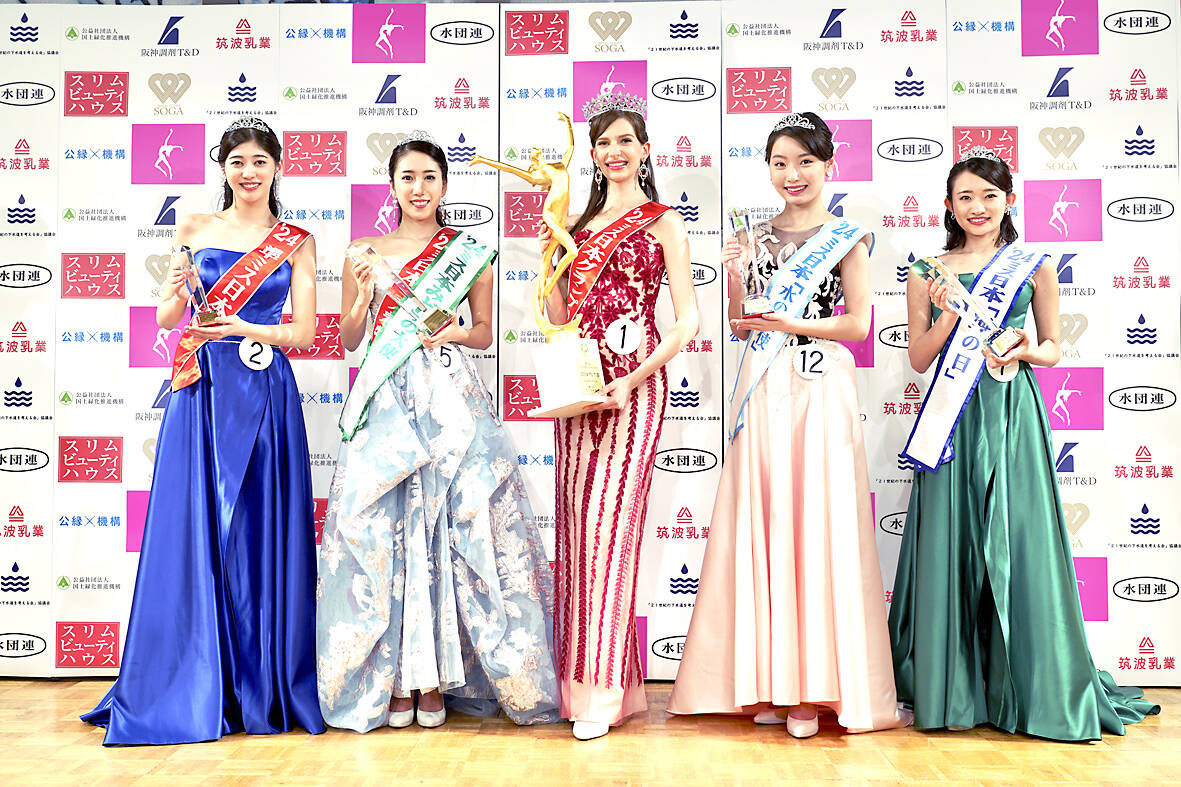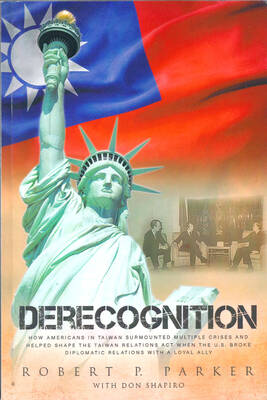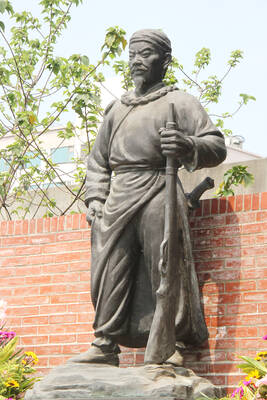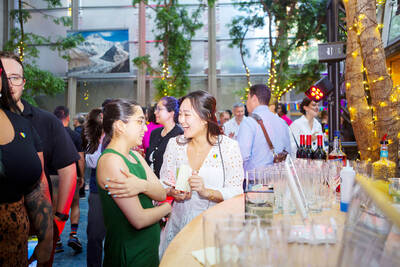The Ukrainian-born winner of a Miss Japan contest has reawakened a long-simmering question on the archipelago: What does it mean to be Japanese
Karolina Shiino, the 26-year-old winner of this year’s competition, moved to the country when she was five and became a citizen last year. Her unexpected victory in a contest that most years passes little-noticed has sparked a debate on “Japanese-ness” — one that is less simple than you might think.
Not everyone was delighted with Shiino’s victory. But it’s not merely a question of a bigoted older generation pushing back on change. Almost everyone accepts that according to the rules, Shiino deserves to win the contest. But Miss Japan, a domestic event unrelated to the more familiar Miss World and Miss Universe titles, also explicitly says its goal is to find “true Japanese beauty.”

Photo: AP
The question being asked is what, if anything, that means in this day and age. The problem is that “Japanese” is a complicated concept. The nationality law is clear enough, affording jus sanguinis (right of blood) citizenship to anyone born to a Japanese parent. Others, such as Shiino, can follow a naturalization process.
But in a way that’s not necessarily true of every nationality, Japanese also more roughly defines an ethnicity — a separate grouping of people with a shared ancestry, culture and language, as one that is at least partly the result of Japan’s geographical and historic isolation. Despite being born in Ireland, I can become a Japanese citizen with relative ease; but surely I can’t become ethnically Japanese, to have the shared roots and ancestry that are the ephemeral but undeniable traits of any ethnic group. I can no more claim membership to that group than I can the right to be Hispanic, or Black.
An easy way to look at it is to consider the case of a university professor who took Canadian citizenship, forfeiting her Japanese nationality as a result. (The country bans dual citizenship, though in practice often turns a blind eye to those who possess it.) Legally, the woman, who went unnamed in a Mainichi Shimbun interview, said she found herself being treated as an illegal foreign resident while staying in her home country. The law says one thing; most, however, would surely still think of her as Japanese. Similarly, the accomplishments of Syukuro Manabe, joint winner of the 2021 Nobel Prize in Physics, are still celebrated as achievements for the country as a whole despite his having switched his citizenship to the US years ago.
There are vast swathes of gray in this debate. Japanese-ness clearly can be something more than a piece of paper. While there’s no doubt that much of the Miss Japan criticism comes from racists and online trolls, some of it is more considered, such as that of the manga author Mayumi Kurata.
“The person chosen as Miss Japan is very beautiful. However, I had interpreted Miss Japan as someone whose beauty represents the Japanese people,” she wrote on Twitter. “She doesn’t fit that definition; her beauty is different from Japanese beauty.” In another post she added, “‘Japanese-ness’ and ‘Japan-ness’ exist in a strict sense.”
At a time when, in much of the Western world, celebration of racial identity is encouraged like never before, it seems somewhat incongruous to say that there is something wrong with the Japanese taking pride in their inherent cultural traits and combined history. Though there might not be a strict definition of Japanese beauty or even what it means to be Japanese, that’s true of any ethnicity; these groupings might be social constructs rather than measurable genetic differences, but as Kurata notes, that doesn’t make them any less real. Before you settle on a stance on this question, what are your views on Brooke Bruk-Jackson, a blonde, white woman who won Miss Universe Zimbabwe last year? That triggered a backlash in some sectors despite Bruk-Jackson being born in Harare.
When even in the US these days debate rages about what defines a “real” American, despite the country’s founding lore celebrating the melting pot and its laws also granting jus soli citizenship to people born within its borders, it’s understandable that in Japan the parameters of the debate differ. It was largely closed off for centuries, and it has explicitly encouraged national myths of Japanese-ness — myths that in time become real social groups. While beneath the surface the nation isn’t as homogenous as foreigners often assume (consider the case of Zainichi Koreans, ethnic Koreans who have lived in Japan for generations), immigration has been lower than that of most developed-nation peers, even if this is changing.
The situation becomes even more complex when we start talking about mixed-race Japanese, often known as haafu (“half”), a term some consider derogatory, but others have embraced. There are many prominent examples in the world of entertainment, from the model Rola (whose father is Bangladeshi) to comedian Naomi Watanabe (whose mother is Taiwanese.)
More internationally, these figures often feature prominently in the sporting world, and the domestic media closely follows their progress. Two of the most prominent examples are Los Angeles Lakers basketball star Rui Hachimura and former tennis world No. 1 Naomi Osaka, who have Japanese mothers and Beninese and Haitian fathers, respectively.
But seen from Japan, Hachimura and Osaka are also very different figures despite their similarities. Hachimura might not “look” like the typical Japanese (whatever that means!), but he speaks the language as his mother tongue, and his mannerisms and conduct match those of any Japanese man of his generation. Osaka, however, was raised in the US and it shows in how she conducts herself; despite her high profile in Japan, such that she was chosen to light the Olympic cauldron at the Tokyo 2020 games, she’s also rarely spotted speaking Japanese in her public appearances. As a result, some seem less convinced by her “Japanese-ness,” though she relinquished her US citizenship in 2019, and her parents said in 2018 that she had always felt more Japanese.
What of Lars Nootbaar, who became a sensation in Japan last year after representing the Japanese national team at the World Baseball Classic. Nootbaar doesn’t speak the language and grew up in California, but the public nonetheless seems charmed by his outgoing, brash — dare I say, American — personality. The country appeared to have little trouble accepting him as the team romped to victory in the tournament.
All of this is to say: It’s complicated. Attempts to draw hard lines seem destined to fail. It appears fair for some to wonder if the Miss Japan organizers were trying a bit too hard to raise the competition’s profile with the choice of Shiino, particularly given Russia’s war in Ukraine, which has engendered broad public sympathy for Ukrainians in Japan. Others might well ask what difference it makes in 2024. Nationalities and ethnicities themselves are becoming more complex in an era of globalization, and the lines of what it means to be Japanese will continue to blur. Some things will change, but others should be preserved, lest they be lost altogether. But let’s not dismiss the debate out of hand.

One of the biggest sore spots in Taiwan’s historical friendship with the US came in 1979 when US president Jimmy Carter broke off formal diplomatic relations with Taiwan’s Republic of China (ROC) government so that the US could establish relations with the People’s Republic of China (PRC). Taiwan’s derecognition came purely at China’s insistence, and the US took the deal. Retired American diplomat John Tkacik, who for almost decade surrounding that schism, from 1974 to 1982, worked in embassies in Taipei and Beijing and at the Taiwan Desk in Washington DC, recently argued in the Taipei Times that “President Carter’s derecognition

This year will go down in the history books. Taiwan faces enormous turmoil and uncertainty in the coming months. Which political parties are in a good position to handle big changes? All of the main parties are beset with challenges. Taking stock, this column examined the Taiwan People’s Party (TPP) (“Huang Kuo-chang’s choking the life out of the TPP,” May 28, page 12), the Democratic Progressive Party (DPP) (“Challenges amid choppy waters for the DPP,” June 14, page 12) and the Chinese Nationalist Party (KMT) (“KMT struggles to seize opportunities as ‘interesting times’ loom,” June 20, page 11). Times like these can

JUNE 30 to JULY 6 After being routed by the Japanese in the bloody battle of Baguashan (八卦山), Hsu Hsiang (徐驤) and a handful of surviving Hakka fighters sped toward Tainan. There, he would meet with Liu Yung-fu (劉永福), leader of the Black Flag Army who had assumed control of the resisting Republic of Formosa after its president and vice-president fled to China. Hsu, who had been fighting non-stop for over two months from Taoyuan to Changhua, was reportedly injured and exhausted. As the story goes, Liu advised that Hsu take shelter in China to recover and regroup, but Hsu steadfastly

You can tell a lot about a generation from the contents of their cool box: nowadays the barbecue ice bucket is likely to be filled with hard seltzers, non-alcoholic beers and fluorescent BuzzBallz — a particular favorite among Gen Z. Two decades ago, it was WKD, Bacardi Breezers and the odd Smirnoff Ice bobbing in a puddle of melted ice. And while nostalgia may have brought back some alcopops, the new wave of ready-to-drink (RTD) options look and taste noticeably different. It is not just the drinks that have changed, but drinking habits too, driven in part by more health-conscious consumers and